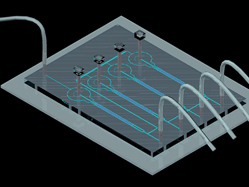*
Corresponding authors
a
Institute of Bioengineering and Nanotechnology, A* STAR, The Nanos, # 04-01, 31 Biopolis Way, Singapore, Singapore
b
NUS Graduate School for Integrative Sciences and Engineering, Centre for Life Sciences (CeLS), # 05-01, 28 Medical Drive, Singapore, Singapore
c
Department of Physiology, Yong Loo Lin School of Medicine, National University of Singapore, # 03-03, 2 Medical Drive, Singapore, Singapore
d
Singapore-MIT Alliance for Research and Technology, S16-05-08, 3 Science Drive 2, Singapore
e
Centre for Mechanobiology, Level 10 T-Lab, 5 Engineering Drive 1, Singapore
f
Singapore-MIT Alliance, National University of Singapore, E4-04-10, 4 Engineering Drive 3, Singapore, Singapore
g
NUS Tissue-Engineering Programme, DSO Labs, National University of Singapore, Singapore, Singapore
h
Department of Mechanical Engineering, Massachusetts Institute of Technology, Cambridge, Massachusetts, USA


 Please wait while we load your content...
Please wait while we load your content...